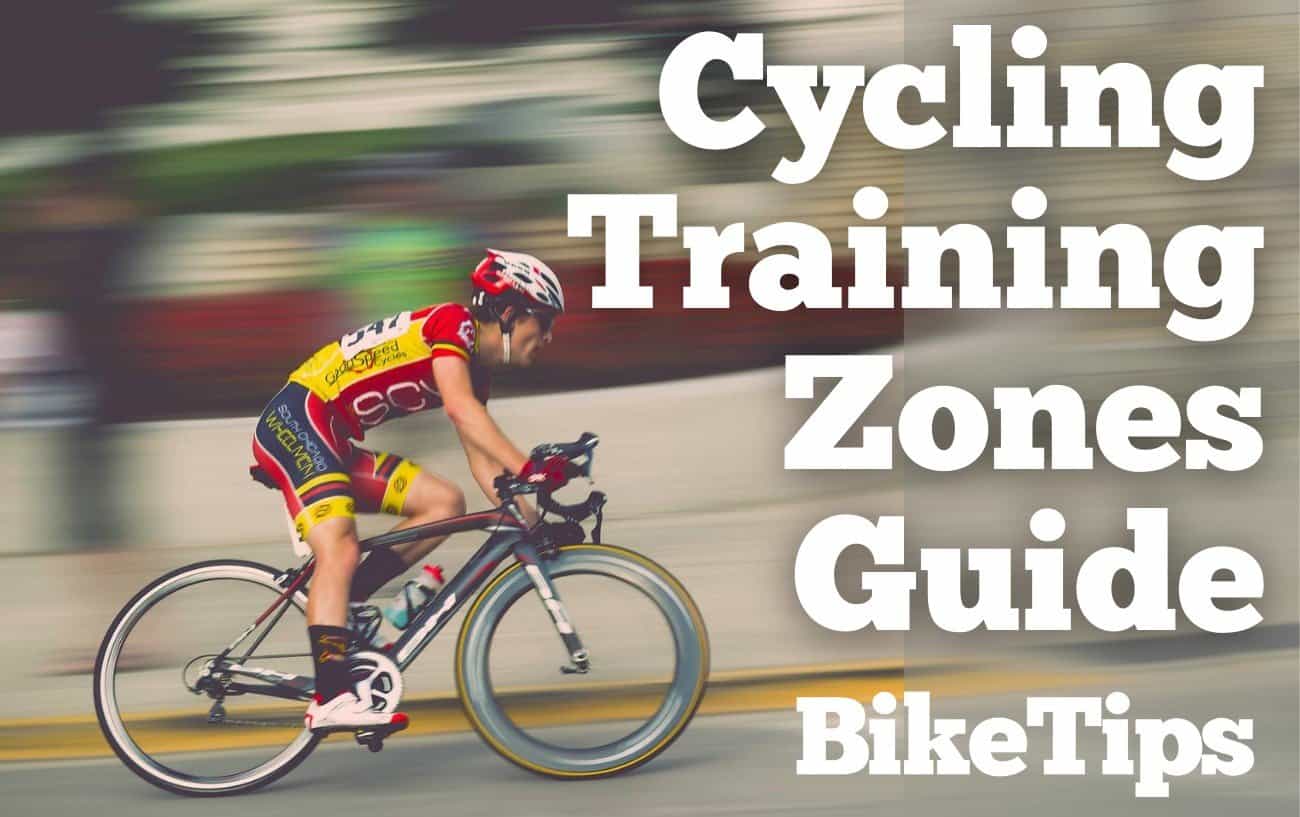As you get more engrossed in the ins and outs of cycling, you will start to look into all the data relating to your prowess on the bike. One of the critical parts of improving your performance is to use the cycling training zones.
Cycling training zones are also called cycling power zones and enable you to focus on specific aspects of your fitness.
There are several cycling training zone models available. For example, some will use cycling heart rates zones and power, while others use FTP (Functional Threshold Power), tempo training, VO2 max, and anaerobic threshold training.
These may seem complicated, but they don’t have to be. With a little understanding of cycling training zones, you can give your rides some structure. This way, you can target specific areas of your fitness you want to improve.
In this article, we will cover:
- What Are Cycling Training Zones?
- 5 Benefits Of Cycling Training Zones
- How To Monitor Your Cycling Training Zones
- Understanding The Different Training Zones
Ready to create more focused rides?
Let’s get started!

What Are Cycling Training Zones?
Each training zone is a region of intensity that corresponds to the processes inside your body. As a cyclist, you can use these training zones to improve all aspects from endurance to sprinting.
Cyclists use training zones to set a specific intensity for their rides and workouts for the duration of the activity. The intensities can be set based on heart rate, power, or perceived exertion, which is how intense the exercise feels.
You can also use training zones to ensure you are not working too hard – when you’re on a recovery ride or riding in between intervals, for example. They allow you to make sure you are riding within a less intense zone.
Cycling training zones are specific to the individual. They are based on your fitness level, so your “zone 4” will differ from that of your riding buddy!

5 Benefits Of Cycling Training Zones
#1. Focus On Your Goal
It is essential to work to a structured exercise plan to get the best results. Cycling training zones make it easier to be more precise with your workouts, allowing you to reach your desired goal. They also help you to avoid overtraining and track your progress.
#2. Plateau Prevention
Cycling training zones helps you to avoid the plateau you can experience after an initial training period. This plateauing usually occurs when you focus on the same type of training for an extended period of time.
#3. Identify Weaknesses
Knowing your cycling power zones allows you to identify your weaknesses and base your training around a particular event or challenge. For example, if you have entered a race in a mountainous area, you can use zones to make sure you climb with a good tempo.
#4. Work Out Your Race Pace
Cycling training zones are also great for developing a pacing strategy, so you can blast across the finish line.
#5. Know When To Take It Easy
Knowing when to ease off is an essential part of any training plan. Using the zones helps you keep the intensity down on recovery rides when you are tempted to push harder than you are supposed to.

How To Monitor Your Cycling Training Zones
You can either use a power meter or a heart rate monitor to monitor your cycling training zones. Each has its advantages and disadvantages.
Fitness watches and some smartwatches have built-in heart rate monitors. Alternatively, you can buy heart rate straps that you wear around your chest during training.
Heart rate monitors make collating your training data very easy. You can get a good idea of how your body responds to your training. Still, the data can be affected by your fatigue, sleep, altitude, and diet.
Also, the data isn’t quite real-time, as there is a slight lag because it takes time for your heart rate to adjust to the intensity you are working at.
Power meters give you an instant picture of your workout. But, it can be tricky to analyze the data, as you get a lot of complex information.
You can use both types of sensors to get a full indication of your cycling training zones. However, you can still train effectively with either one.

Understanding The Different Training Zones
As we mentioned earlier, there are a few different cycling heart rate zone models. Depending on which one you use, there are different numbers of zones.
The Three Zone Model
The Three Zone Model uses your body’s internal physiology, and is separated into easy, medium, and hard intensities. They are accordingly labeled as Green, Yellow, and Red:
- When riding in the Green Zone, you should find it easy to talk and breathe.
- The Yellow Zone equates to a sustainable intensity where you can say a few words as you ride.
- The Red Zone leaves you speechless and gasping for breath.
The Three Zone Model uses the rate of perceived exertion, which is how the workout feels to you. Some people call it “riding on feeling.” It is still a commonly used method, even with heart rate monitors and power meters being available.
The Three Zone Model is also based on your body’s thresholds, such as your aerobic threshold. This intensity sits between the Yellow and Red Zones, where you can ride for hours as long as you have enough fuel.
Your anaerobic threshold is also called your FTP (Functional Threshold Power). This is when your blood lactate levels are higher but still controlled.
If you go beyond your FTP, you will quickly drop into the Red Zone. You’ll soon realize that this level of intensity isn’t sustainable, and you’ll start to tire as your limited glycogen stores are being used up.
The Three Zone Model is an effective way to align the various thresholds. However, most cyclists and trainers use models with five, six, or seven cycling training zones.
When you use a model with more zones, you can be more accurate and specific with your training.
The Six Zone Model
The Six Zone Training Model is commonly used by cycling trainers and Zwift, due to its accuracy.
Each zone is based on a percentage of your threshold heart rate or power.
Zone One – Active Recovery
You should find it very easy when you ride in Zone One, with not much effort going into the pedals. Typically you will ride at this intensity after a hard workout or race to help you recover.
Zone Two – Endurance
Zone Two riding should still feel easy, but you’ll breathe a bit heavier and faster than when you ride in Zone One. If you’re reasonably fit, you should be able to ride for three hours or more in Zone Two, as long as you fuel your ride correctly.
Zone Three – Tempo / Sweetspot
In Zone Three, you’ll notice your breathing becomes more labored, and you’ll need to concentrate more to keep up the effort. Talking will be harder too.
You’ll be able to ride in Zone Three on consecutive days, but nutrition is more critical. How long you ride in Zone Three will depend on your experience, strength, and mindset.
Zone Four – Threshold
When you’re riding in Zone Four, chatting to your riding buddies will be very difficult. Your breathing will be heavy, but you shouldn’t be struggling to catch your breath.
You’ll need to concentrate and stay determined to maintain your pace. Therefore, riding in Zone Four is usually done in blocks of 10 to 30 minutes. It should be challenging to ride in Zone Four on consecutive days for long periods, but possible. If you do this, make sure you recover and feed yourself adequately.
Zone Five – VO2 Max
You will only be able to ride in Zone Five for a few minutes at a time. It’s pretty painful, and you’ll be breathing hard. You’ll find it very difficult to maintain this pace for long.
It’s difficult to ride effectively on consecutive days in Zone Five.
Zone Six – Anaerobic Capacity
The anaerobic capacity zone is where you’ll be suffering.
It’s pretty much where you’re sprinting at your maximum effort, so you should only be at this intensity between 30 seconds and 3 minutes.
If you can go for longer, you’re not in Zone Six – it’s as simple as that!
You will find it very hard to ride in Zone Six on consecutive days. You can’t use heart rate to monitor these efforts, as there is too much lag between your effort and how the heart rate monitor responds.

Time To Get Riding!
Now you know all about the different cycling training zones and how to use them, it’s time to put them to use in your training plan!
With this knowledge, you can effectively target your fitness and cycling goals. But remember – you need to use a structured training plan to focus your efforts if you want to see the full benefit!
Found this Training Guide useful? Learn more from the BikeTips experts in the articles below!
- How To Make A Bike Stationary: DIY Exercise Bike



